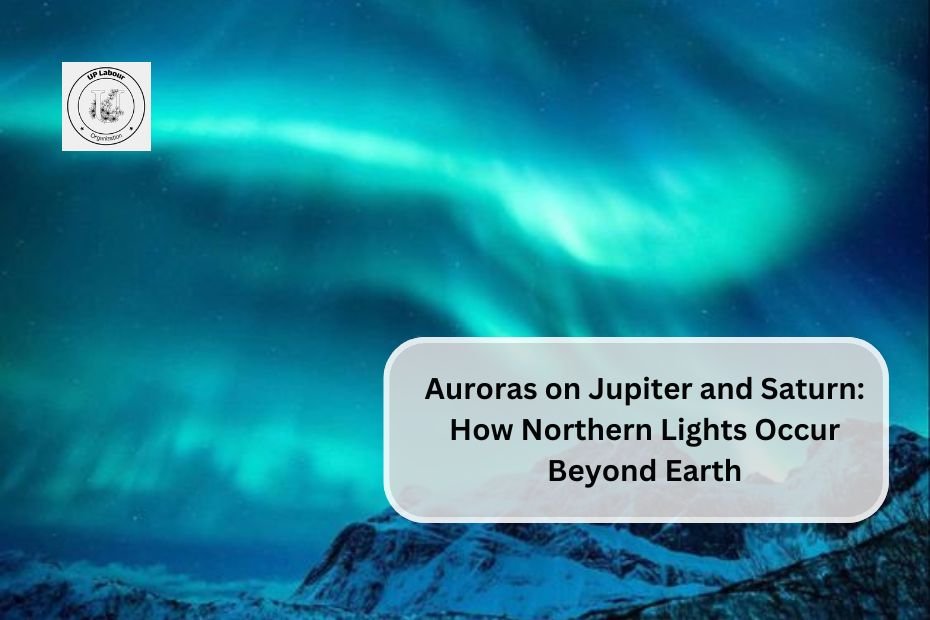The Northern Lights, or aurora borealis, are a captivating phenomenon primarily associated with Earth. However, similar displays occur on other planets, notably Jupiter and Saturn, where auroras exhibit unique characteristics influenced by each planet’s magnetic field, atmosphere, and solar activity. Understanding how auroras manifest on these gas giants provides valuable insights into planetary science and the dynamics of solar interactions across the solar system.
The Mechanism of Auroras
Auroras result from the interaction between charged particles from the sun, known as the solar wind, and a planet’s magnetic field and atmosphere. This process can be broken down into several key components:
- Solar Wind: The sun continuously emits a stream of charged particles that travel through space. When these particles reach a planet’s magnetosphere, they can interact with its magnetic field.
- Magnetic Field Dynamics: Each planet has its own magnetic field that shapes how solar wind particles are funneled toward the poles. The geometry of these magnetic fields is crucial for determining where auroras will occur.
- Atmospheric Interaction: When charged particles collide with atmospheric gases, they excite those gases, causing them to emit light—a process that creates the beautiful displays we see as auroras.
Auroras on Jupiter
Jupiter’s auroras are among the most powerful in the solar system, significantly more energetic than those on Earth:
- Intensity and Scale: Jupiter’s auroras can be hundreds of times more energetic than Earth’s. They are created primarily by a combination of solar wind particles and a steady influx of charged particles from its volcanic moon Io. This moon continuously ejects material into space, contributing to Jupiter’s magnetosphere.
- Heat Generation: Recent studies have shown that Jupiter’s intense auroras superheat its upper atmosphere to temperatures exceeding 400°C (about 750°F), which is much warmer than expected given its distance from the sun. The auroral activity generates heat that circulates throughout Jupiter’s upper atmosphere.
- Electric Potentials: Observations from NASA’s Juno spacecraft have revealed that electric potentials in Jupiter’s auroras can reach up to 400,000 volts—significantly higher than those observed on Earth. This high voltage accelerates particles to create intense light displays.
Auroras on Saturn
Saturn also exhibits fascinating auroral activity, although its mechanisms differ somewhat from those on Jupiter:
- Long-lasting Displays: Unlike Earth’s auroras, which typically last for about 10 minutes, Saturn’s auroras can persist for days. This extended duration allows for more complex interactions between solar wind and Saturn’s magnetic field.
- Solar Wind Influence: Research indicates that the solar wind plays a larger role in shaping Saturn’s auroras than previously thought. Observations have shown that despite variations in the direction of the solar wind’s magnetic field, solar wind pressure still significantly affects auroral activity.
- Unique Morphology: Saturn’s auroras exhibit distinct structures that can change based on solar conditions. For instance, when the planet rotates beneath stationary auroras, they may appear to move or shift in shape due to changes in solar wind dynamics.
Implications for Planetary Science
Studying auroras on Jupiter and Saturn not only enhances our understanding of these gas giants but also provides insights into broader planetary processes:
- Understanding Magnetospheres: By examining how different planets respond to solar activity through their auroral displays, scientists can gain insights into their magnetic fields and atmospheres.
- Space Weather Forecasting: Insights gained from studying these extraterrestrial auroras can help improve our understanding of space weather phenomena affecting Earth and other celestial bodies.
- Exoplanetary Research: The principles learned from Jovian and Saturnian auroras may also apply to exoplanets with similar characteristics, enriching our knowledge about potential habitability and atmospheric dynamics beyond our solar system.
Conclusion
Auroras on Jupiter and Saturn illustrate the diverse ways in which solar activity interacts with planetary environments across the solar system. While these gas giants share similarities with Earth’s Northern Lights in terms of fundamental processes, their unique characteristics—shaped by their magnetic fields and atmospheric conditions—offer exciting opportunities for exploration and discovery in planetary science. As we continue to study these distant worlds through missions like NASA’s Juno spacecraft and others, our understanding of both our own planet’s phenomena and those beyond will expand significantly.

